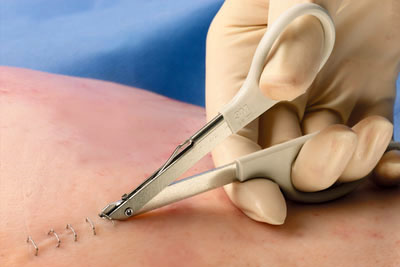Menu
News
Don't let an injury cut the Hunt short before bringing home your trophy game!


September 20, 2017
Don't let an injury cut the Hunt short before bringing home your trophy game!
You don't have to cut your hunting trip short if an accident happens. Be prepared...
How to Use a Staple Removal Kit for Safe Staple Removal


September 13, 2017
How to Use a Staple Removal Kit for Safe Staple Removal
Due to the fact that surgical staples are most often used for repairing wounds in...
What You Should Have in Your First-Aid Kit


August 21, 2017
What You Should Have in Your First-Aid Kit
Nobody plans on needing to administer first-aid, at least not in the typical setting of...
What Is Derma Bond And What Is It Used For?


August 18, 2017
What Is Derma Bond And What Is It Used For?
Derma bond is an effective alternative to suturing incisions or wounds that would normally require...
The versatility of Provider Prepared Kits exemplified!


August 16, 2017
The versatility of Provider Prepared Kits exemplified!
"I am so grateful for provider prepared! It was late and my daughter was in...
Everything You Need To Know About Sutures


August 16, 2017
Everything You Need To Know About Sutures
Different Suture Types Surgical sutures are typically divided into two types: non-absorbable and absorbable. However,...
Uncle Brad to the rescue!


August 15, 2017
Uncle Brad to the rescue!
This stallion of a PA sewed up his nephew after being struck in the head...
Sarah's Experience with her Provider Prepared Kit


August 11, 2017
Sarah's Experience with her Provider Prepared Kit
Just finished suturing my kiddo on the kitchen table at grandma's house. Soo grateful to...
Common Summer Illnesses and Injuries


July 27, 2017
Common Summer Illnesses and Injuries
Summertime is one of the most adventurous seasons, and it’s also one of the busiest...
- Choosing a selection results in a full page refresh.



